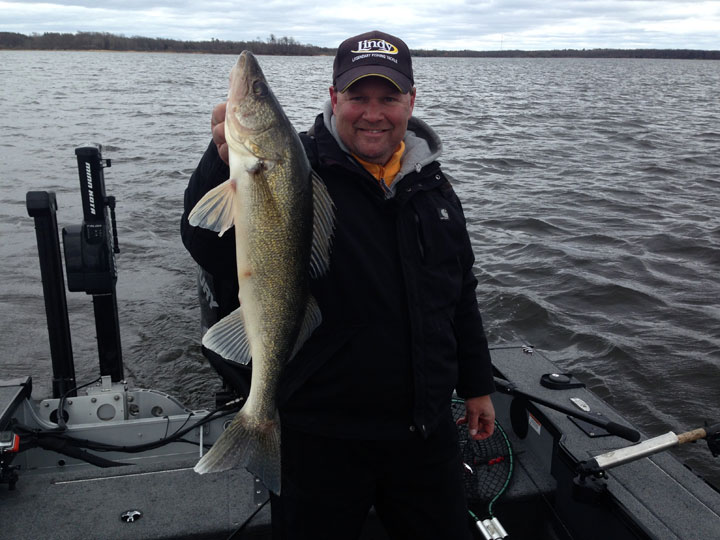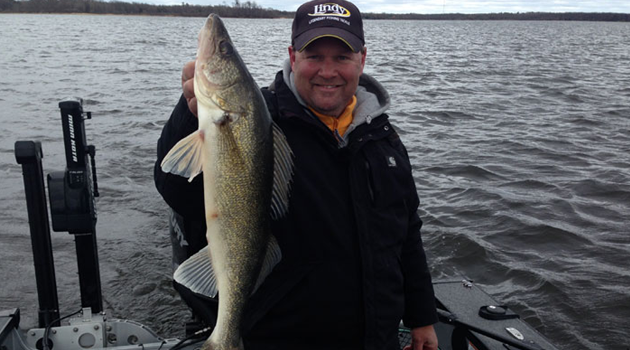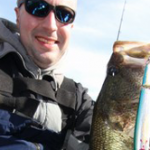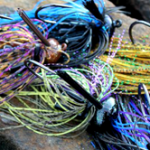Traditional summertime tactics catch plenty of big ‘eyes, or else they wouldn’t have become such strong traditions. Lindy Rigging, pulling spinners and suspending live bait account for countless catches. But sometimes, thinking outside the box is an even better way to put more, bigger walleyes in the box.
Just ask Jon Thelen. The longtime guide and sage of all things walleye often flips the tactical textbook upside down when conditions—or the fish themselves—dictate an unorthodox approach. As a result, he keeps his clients’ lines stretching while other anglers are struggling. Following are three of his top tricks for turning the tables on ever-elusive summertime ’eyes.
No. 1 Lil’ Guy For Big Fish
“A classic time for offbeat tactics is during the ‘in-between’ period of early summer, when walleyes bite both spinner rigs and crankbaits fairly well—but neither one like gangbusters,” Thelen said.
With water temperatures in the middle of the road, climbing through the high 50s into the 60s, and neither cranks nor blades are exactly on fire, it can simply result in slow fishing. In this situation, Thelen suggests turning to hybrid cranking. Rigs like Lindy’s Lil’ Guy are dynamite for blending the best of both presentations into one technique.
A relative newcomer on the walleye scene, the Lil’ Guy is basically a two-hook nightcrawler harness with a small, hard body in front of it.
“The body creates vibration and side-to-side movements, while the ’crawler adds the motion of a minnow swimming along,” he explains. “Plus, you have scent and meat. And in this respect, the Lil’ Guy offers the attraction of a third technique—Lindy Rigging—to the mix as well.”
To further boost his odds of success, Thelen plays the hybrid rig card in areas many anglers overlook during the in-between phase of the post-spawn migration. Most folks leap-frog from shorelines that hold fish early in the season out to deep offshore structure, he says.
“In doing so, they blow right past prime breaklines in 15 to 23 feet of water. Walleyes don’t skip these spots, which means I often have the fish all to myself.”
Along with nightcrawlers, Thelen deploys other live bait. The rig comes with two hooks. To fish minnows or leeches, Thelen just clips off the rear hook. While the Lil’ Guy is built to run at speeds of .3 to 2.5 mph, Thelen keeps the pace between 1.3 and 1.8 mph.
“Faster than a spinner, slower than a crankbait,” he says.
At such speeds, a 1½-ounce bottom bouncer is perfect for keeping the rig in the strike zone. When the sinker’s occasionally ticking bottom and the line is at a 45-degree angle to the surface, you’re in business.
Be forewarned, strikes can be savage, so hang onto your rod. When an ’eye attacks, an immediate response is in order. Don’t drop the rodtip or feed the fish line, just set and start reeling.

No. 2 Pitch To The Inflow
“Pitching jigs and crankbaits to inflowing water is another offbeat summer tactic,” Thelen says. “People key on it early in the year, then forget about it and focus on deeper areas farther from the shoreline, but inflows hold walleyes as long as there’s food around.”
Storm sewers, culverts and creeks are prime examples of potentially productive inflows. A constant supply of fresh water from nearby roadbeds, ditches and other sources often carries nutrients that attract baitfish. It can also bring in water that’s clearer than the main lake, especially when the lake has been roiled up by several days of strong winds.
Water temperature can also be a factor.
“Inflows carrying cool water from cold rains, springs or shaded sections of the tributary can be magnets for minnows and walleyes in the heat of summer.”
Before wetting a line, Thelen first identifies likely inflows on a detailed lake map. He approaches each with caution, keeping commotion to a minimum. Walleyes are spooky in shallow water, so ease in quietly.
“I always fish my way toward the mouth of the inflow, making my first casts before I can even reach the bank.”
Pet presentations include pitching light jigs tipped with live bait, and fancasting small crankbaits. A 3/16- to 1/8-ounce Lindy Jig tipped with a spottail shiner or soft-plastic trailer is deadly.
“There are a lot of different things you can do with it—bounce bottom, drag it, swim it just off bottom. Experiment to see what the fish are in the mood for at the moment.”
Small crankbaits like the size 3 Lindy River Rocker also excel around inflows. With both cranks and jigs, Thelen works 50 yards to either side of the inflow first, then the actual tributary.
“When they’re not feeding, walleyes often rest close to the inflow, but are still catchable.”
No. 3 Troll Shallow with Cranks
While crankbaits aren’t often considered early to mid-season options, Thelen works them into the mix well ahead of the crowd.
“Cranks catch cool-water walleyes in the shallows during low-light feeding periods and in 8 to 10 feet of water along the first break during the day,” he said.
Here, too, a small lures like the River Rocker work wonders. Thelen prefers natural patterns such as perch, shiner, metallic silver and metallic gold.
“Speeds of 1.5 to 2 mph are best until the water warms up in mid to late June,” he says.
Given the relatively shallow water, he either runs the bait behind a planer board or long-lines it well behind the boat, ensuring the fish aren’t spooked before getting a chance to appreciate—and engulf—his cool-water cranking tactics.







